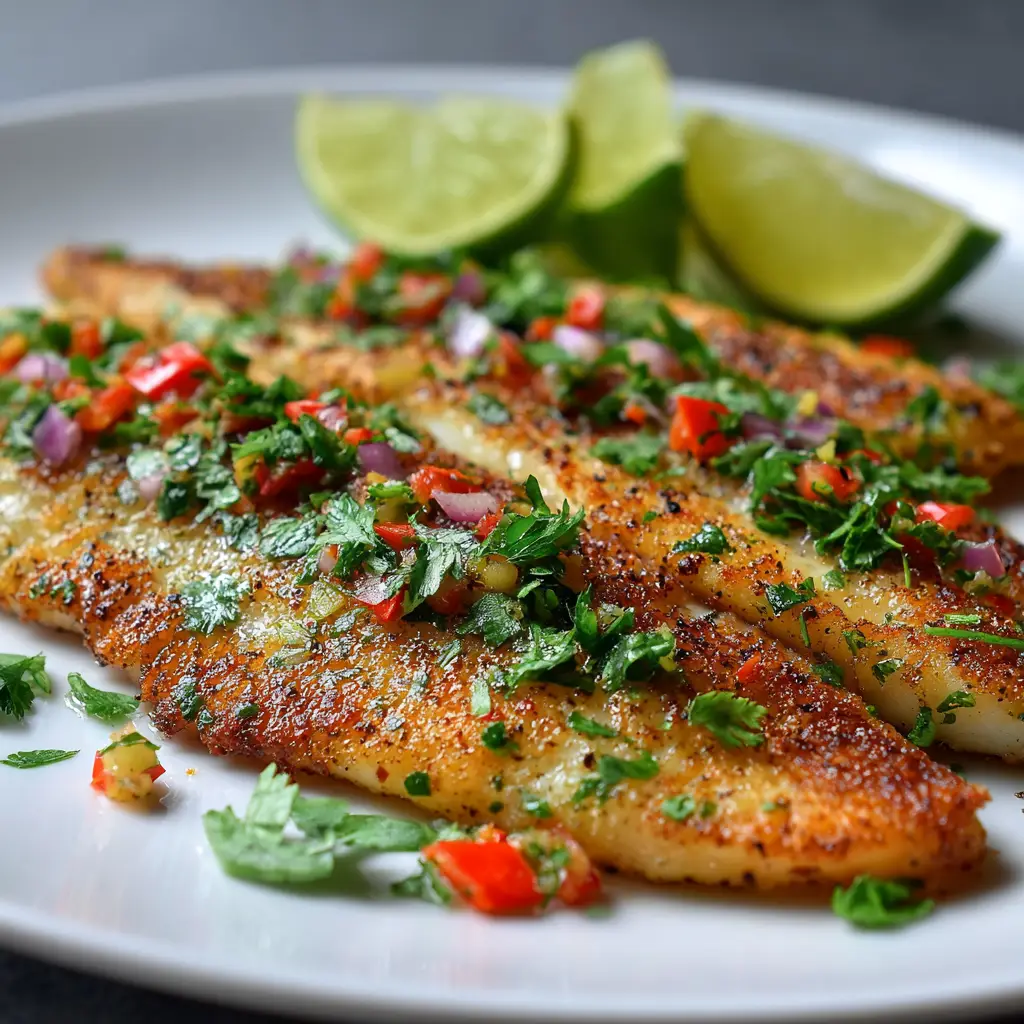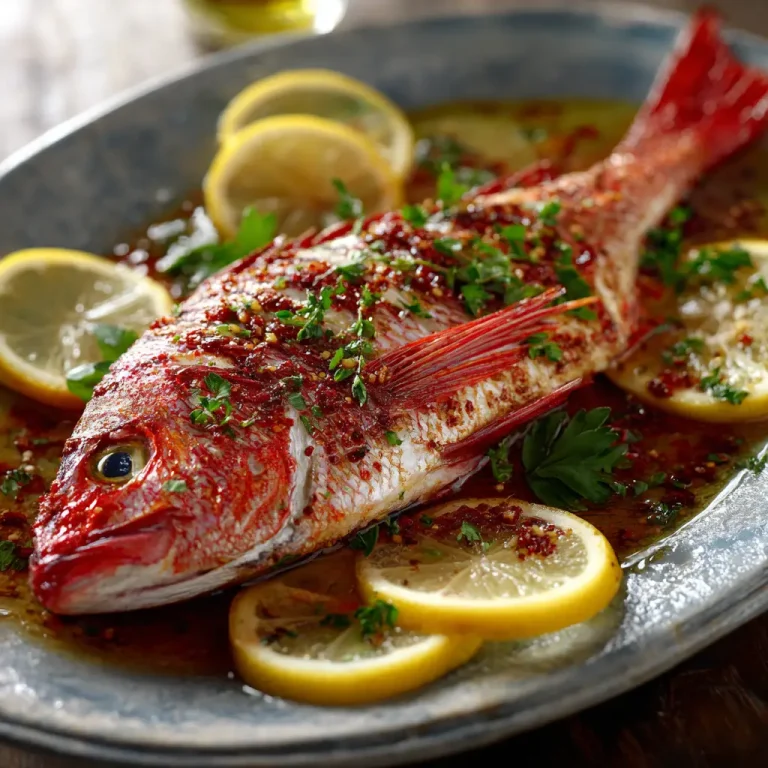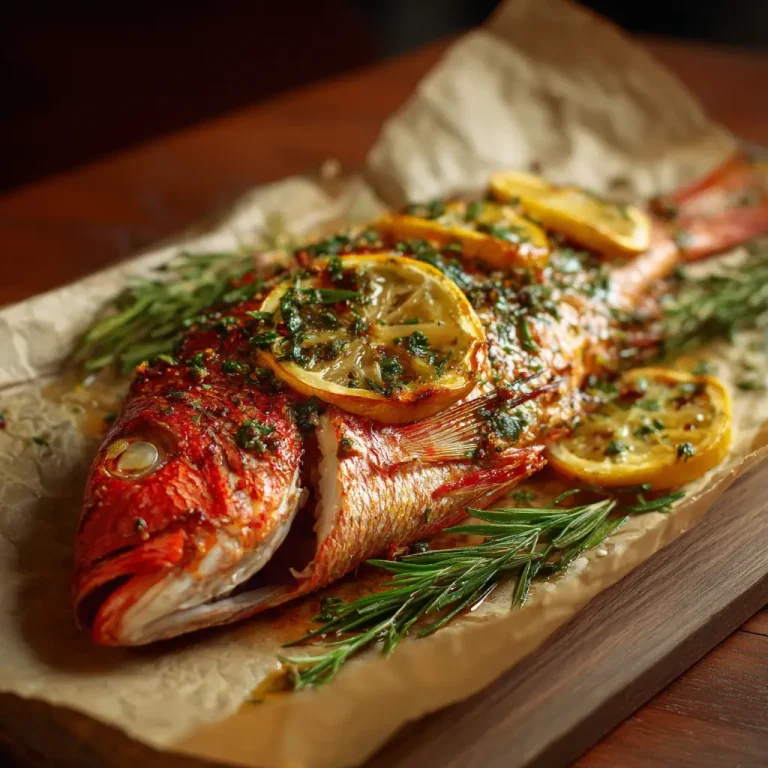Tilapia Recipes: Easy, Healthy, and Delicious Ways to Cook Perfect Tilapia at Home
Introduction
Cooking fish is a wonderful way to bring flavour, nourishment and elegance to the dining table, and the mild white‐fleshed fish tilapia offers a perfect canvas. With its gentle taste and flaky texture, tilapia lends itself to a broad array of cooking styles from simple weeknight meals to more elaborate dinners. Even if you have not cooked fish often before, this recipe will give you the confidence to prepare a dish that looks and tastes professional. At the same time it remains approachable for cooks of all skill levels. The key lies in selecting a good quality fillet, seasoning well, and applying cooking methods that emphasise the fish’s natural appeal without overwhelming it. In the spaces below you will find all you need — a clear list of ingredients, a detailed step‐by‐step process, guidance for customising to your taste, full nutritional context, serving ideas to elevate the meal and finally a few frequently asked questions to help you along the way.

Ingredients Needed
Here is a table of the main ingredients for a simple baked tilapia dish, along with approximate calorie counts. You may adjust quantities as needed.
| Ingredient | Calorie Count (approx) |
|---|---|
| 4 tilapia fillets (about 4 oz each) | ~ 520 kcal total (approx 130 kcal each) |
| 2 tbsp olive oil | ~ 239 kcal |
| 2 tbsp melted butter | ~ 200 kcal |
| 3 cloves garlic (minced) | ~ 13 kcal |
| Juice of 1 lemon (≈ 2 tbsp) | ~ 8 kcal |
| Salt and freshly ground black pepper to taste | negligible |
| 2 tbsp fresh parsley (chopped) | ~ 5 kcal |
| Optional: 1 tsp paprika | ~ 6 kcal |
Total approximate calories for the dish: ~ 991 kcal for four servings → ~ 248 kcal per serving.
Feel free to substitute or add other ingredients (herbs, spices, vegetables) according to taste.
Step‐by‐Step Cooking Instructions
- Preheat the oven to 400 °F (about 200 °C). Lightly grease a baking dish with cooking spray or a bit of olive oil.
- Pat the tilapia fillets dry with a paper towel. This helps ensure a good texture and browning.
- Season both sides of each fillet with a little salt and pepper. Place the fillets in the prepared baking dish in a single layer.
- In a small bowl combine the melted butter, olive oil, minced garlic and lemon juice. Whisk gently to mix.
- Pour the butter‐garlic‐lemon mixture evenly over the fillets. If you like, tuck a few slices of lemon around the fish for flavour and presentation.
- Optionally, sprinkle paprika over the fillets to add colour and a mild smoky dimension.
- Bake in the preheated oven for 10 to 12 minutes, or until the fish flakes easily with a fork and is opaque throughout. Thickness of fillets may require slight adjustment in time.
- Remove from the oven and sprinkle chopped fresh parsley over the top for a bright finish.
- Let the dish rest for about 1 minute, then plate immediately so the fish remains moist and flavourful.If you want more information, you can also check out our article on Snapper Fish Recipe.
If you prefer a crispier top you may broil the dish for the last 1–2 minutes, watching carefully so it does not burn.

Tips for Customizing the Recipe
- Spice it up: Add a pinch of cayenne pepper or chilli flakes to the butter mixture for some heat.
- Herb variation: Swap parsley for fresh dill, basil or cilantro to change the aroma and flavour profile.
- Citrus twist: Use lime or orange juice instead of lemon for a different tangy note.
- Crust option: For a crunchy crust, you can lightly coat the fillets in panko breadcrumbs mixed with grated Parmesan before baking; reduce the butter/olive oil slightly to compensate.
- Global flavour: Try a South Indian style with turmeric, cumin seeds, curry leaves and coconut milk as sauce—this transforms tilapia into a more exotic dish.
- Vegetable companion: Arrange sliced zucchini, bell pepper or cherry tomatoes around the fish in the baking dish so vegetables cook alongside the fillets and soak up the flavour.
- Low fat version: Omit the butter and use just a light drizzle of olive oil; serve with lemon wedges.
- Allergy/special diet adaptation: Use dairy‐free margarine or plant‐based butter to suit vegan butter substitutes; maintain same cooking method.

Nutritional Information
The fish fillet itself is a lean, protein‐rich choice. For example a cooked fillet of tilapia weighing 87 g contains about 22.8 g of protein, 2.3 g of fat, and approximately 111 calories. Other sources list about 96 kcal per 100 g of raw tilapia, with roughly 20 g of protein.
Tilapia is also a good source of micronutrients such as selenium, vitamin B12, phosphorus and potassium
When combined with the butter, olive oil and seasoning in this recipe, each serving remains moderate in calories (~250 kcal) and offers excellent protein, making it a strong choice for a healthful meal.
If you serve it alongside whole-grain rice or steamed vegetables, be mindful to account for those extra calories.
Here is a breakdown per serving (approximate):
Because tilapia is relatively low in fat and calories compared with many other protein sources, it can be a helpful part of a balanced diet when prepared properly.
Serving Suggestions
- Serve the tilapia fillet with a side of steamed broccoli or green beans and a wedge of lemon for a light, clean plate.
- Pair it with a small portion of quinoa or brown rice and a fresh tomato-cucumber salad dressed lightly in olive oil and vinegar.
- For a more elegant presentation, top each fillet with a spoonful of herb-garlic butter sauce and garnish with a sprig of parsley or dill.
- To make it friendly for children, serve with mashed potatoes or sweet potatoes and a quiet lemon-butter drizzle rather than heavy seasoning.
- For a Mediterranean flair, place the tilapia on a bed of sautéed spinach and cherry tomatoes, and serve with a slice of warm crusty bread to soak up the juices.
- If you are entertaining, you might serve two smaller fillets per person and accompany them with a light white wine (if appropriate) or a sparkling water with a twist of lemon—though for a non-alcoholic setting water with lemon or iced herbal tea works beautifully.
- Leftovers can be flaked and used in tacos, wraps or salads the next day. A cold tilapia salad with some chopped cucumber, chopped herbs and a light yogurt or lemon-olive oil dressing makes a refreshing lunch.
Tilapia Recipes: Easy, Healthy, and Delicious Ways to Cook Perfect Tilapia at Home
Course: Blog4
servings10
minutes12
minutes248
kcalIngredients
4 tilapia fillets (about 4 oz each)
2 tablespoons olive oil
2 tablespoons melted butter
3 cloves garlic, minced
Juice of 1 lemon (about 2 tablespoons)
Salt and black pepper, to taste
2 tablespoons chopped fresh parsley
1 teaspoon paprika (optiona
Directions
- Preheat the oven to 400°F (200°C) and lightly grease a baking dish.
- Pat the tilapia fillets dry with paper towels to remove moisture.
- Season both sides of each fillet with salt and black pepper. Arrange them in the prepared dish.
Recipe Video
Notes
- For a crispier texture, switch the oven to broil mode for the last 1–2 minutes of cooking, keeping a close watch to prevent burning.
You can also customize this recipe by adding vegetables like cherry tomatoes, zucchini, or spinach to the baking dish for a complete one-pan meal.
Frequently Asked Questions
Q: How do I know when tilapia is cooked properly?
A: The fillet should be opaque all the way through, and it should flake easily with a fork in the thickest part. Avoid over-cooking because tilapia will dry out.
Q: Can I use frozen tilapia fillets?
A: Yes. Thaw thoroughly in the fridge or under cold running water, pat dry thoroughly to remove excess moisture, and proceed with the recipe as if fresh.
Q: What if the tilapia has a “muddy” or off flavour?
A: Some tilapia may taste a bit muddy or musty if sourced from certain farming environments. Rinsing, patting dry and using strong flavourings like lemon and garlic helps mitigate that. Choosing a good quality source also makes a difference.
Q: Is tilapia healthy?
A: Yes, when sourced and prepared properly. It is lean, offers high protein and contains beneficial minerals and vitamins. As with all fish, choosing responsibly farmed or wild-caught varieties and balancing with other foods in your diet is wise.
Q: Can I grill or pan‐fry instead of baking?
A: Certainly. Just adjust cooking time and ensure even heat. When pan-frying, use a non-stick skillet, moderate heat and a small amount of oil; when grilling, ensure the fillets are well oiled and consider using a fish basket or foil to prevent sticking.
Conclusion
Cooking tilapia can be both simple and elegant. With a few key ingredients — tilapia fillets, garlic, lemon, butter or olive oil, and herbs — you can create a dish that delivers flavour and nutrition in equal measure. The process is straightforward, the result is versatile and appealing, and the fish itself offers a lean, protein-rich foundation for healthy eating.







